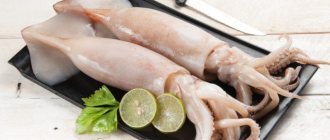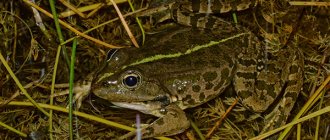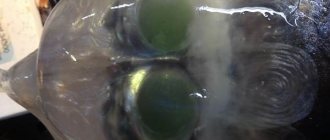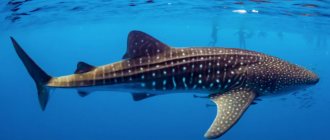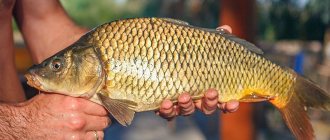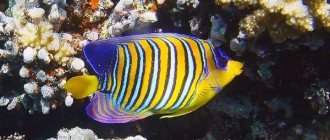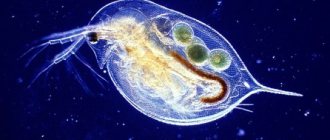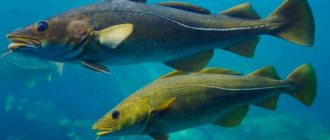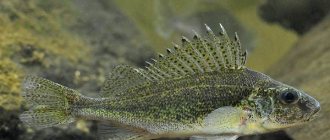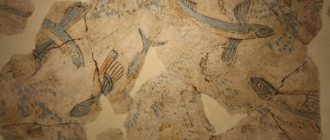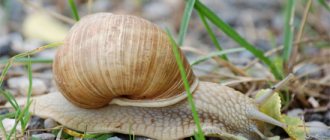Ambystoma - description, characteristics, structure
Outwardly, Ambystoma is very similar to other tailed amphibians - salamanders, and in their homeland in America, as well as in a number of English-speaking countries, they are called mole salamanders, because Ambystoma spend most of their life underground.
An adult ambystoma has a strong, dense body with noticeable longitudinal grooves on the sides and a long tail, rounded at the base. Ambisto skin is smooth, without roughness. The legs are thin and short. The forelimbs have 4 fingers, the hind legs are five-fingered. The head is wide, flattened, with small eyes.
Most ambistos are distinguished by a rather spectacular skin color with a rich range of colors and a wide variety of patterns: from blue spots to wide yellow stripes.
All members of the family have doubly concave vertebrae and are distinguished by the absence of an angular bone on the skull. The palatal teeth are located transversely.
The average lifespan of an ambistoma is 10 years or more.
How to turn an axolotl into an amblystoma
Axolotl can be purchased in stores that sell aquariums, fish for aquariums, etc. Most of all, it resembles a newt, but is much larger, reaching five inches in length.
In addition, he retains gills for his entire life, which stick out in the form of bushes on the sides of his head. This animal comes from America, but in our country it breeds well in aquariums and reproduces easily. It has long been known that axolotls, under some poorly understood conditions, undergo great changes in the structure of their bodies and turn into another animal, which is also found freely in America. This other animal is called Amblystoma. This transformation consists of the fact that the axolotl’s gills disappear, as happens when a newt larva transforms into an adult state. In addition, light spots appear on his skin, and his tail turns from flat, paddle-shaped, to more or less round. Thus, it has long been known that the axolotl is nothing more than an amblystoma larva, but a larva capable of reproducing. It is remarkable that amblystoma itself cannot reproduce. Until recently, it was believed that it was difficult to force an axolotl to turn into an amblystoma in an aquarium, so those observers who succeeded in this considered it their duty to notify about this in special journals. For such a transformation, a special aquarium was set up, in which axolotls could walk onto land along the flat bottom. Recently a new method has been discovered by which every axolotl can easily be made to turn into an amblystoma. To do this, the axolotl must be fed raw thyroid gland from a bull or goat. This gland can be obtained from butchers upon request, but you can replace it with the so-called thyroidin. This is a drug prepared from the thyroid gland. It can be bought at a pharmacy. It comes in the form of a powder that should be given along with the meat. A thin slice is cut out of the meat, 0.02 to 0.05 grains of thyroidin are poured into it, this slice is wrapped and given to the axolotl, holding the entire lump with tweezers. This medication should be given once a day and no other food should be fed. In 5-6 weeks the axolotl will turn into an amblystoma. Very small axolotls, however, do not transform.
The thyroid gland is very important in the life of animals. It is believed that axolotls in aquariums do not turn into amblystoma for the reason that their thyroid gland is underdeveloped. In humans, overdevelopment of this gland causes a painful condition called goiter. It is expressed in the formation of a tumor on the neck, which sometimes reaches the size of a human head. Damage to the thyroid gland causes a disease in humans called myxedema. It is expressed in mucous swelling and usually ends in death.
If damage to this gland occurs in childhood, then the child becomes an idiot. And finally, this gland has some amazing property of promoting the transformation of the axolotl into an amblystoma. A painful condition caused by damage to the thymus gland (even idiocy) can be cured if the patient is transplanted with the thyroid gland of a monkey or even a goat.
If you find an error, please select a piece of text and press Ctrl+Enter.
Axolotl, or Ambystoma larva
Ambystoma has gained fame due to its larval stage - the axolotl, which becomes sexually mature early and can reproduce without completing metamorphosis and developing into an adult Ambystoma. This phenomenon is called neoteny and occurs mainly if the larvae have to develop in deep bodies of cool water. In shallow and warm waters, complete metamorphosis occurs without fail.
Very often the name “axolotl” is applied to the larva of the Mexican Ambystoma. In fact, the axolotl is the larva of any ambystoma. Literally translated from the Aztec languages, axolotl means “water dog (monster),” which is quite true. Due to its disproportionately large head, wide mouth and tiny eyes, it seems that the axolotl is constantly smiling. External gills sticking out to the sides, in some species represented by branched processes, add to the not-so-pleasant impression. Axolotls, like other larvae of tailed amphibians, are predators who are also able to regenerate damaged or lost body parts, even internal organs.
At home, having the necessary experience, an axolotl can be turned into an ambistoma artificially by gradually transferring the amphibian to a dry environment or adding the hormone thyroxine to its food.
Compatibility
The best way to keep an axolotl is separately from any other inhabitants. Since these are predatory creatures, they will easily destroy small and peace-loving fish. And predators and large species can destroy the water dragons themselves - their skin and corolla of gills are very fragile and delicate.
In addition, axolotls are nocturnal predators and their lifestyle does not coincide with aquarium fish.
The only exception is, perhaps, goldfish. They are slow and non-aggressive and have the same temperature regime as axolotls. In this case, it is only important to feed all pets well. Other species of fish, frogs, mollusks, and reptiles will not be able to get along with these creatures.
Types of ambistom, names and photos
The biological taxonomy of Ambystomaceae is periodically revised. The genus Ambystomaceae includes 33 species, the genus Giant Ambystoma includes 1 species and several subspecies. Below is a description of some of them:
- Tiger Ambystoma (Ambystoma tigrinum)
grows up to 28 cm in length, with half the body length being the tail. There are 12 grooves on the sides of the amphibian, and the skin color can be dark brown or olive green with yellow stripes or spots scattered throughout the body. The front legs have 4 toes, the hind legs - 5. During the day, tiger ambystomas sit in burrows, and at night they eat worms and hunt mollusks and various insects. Tiger axolotls are often kept as aquarium animals. Particularly popular are albinos—artificially bred individuals distinguished by bright red external gills. The tiger ambystoma lives on the banks of lakes, ponds and rivers from northern Mexico to Canada.
Photo by: Daniel D. Dye
- Marbled Ambystoma (Ambystoma opacum)
It is distinguished by a strong, stocky build and bright gray stripes on the body: females are grayer, males are somewhat whiter. The body length of an adult marbled ambystoma is only 10-12 cm. Representatives of the species lead a secretive lifestyle in dense, humid forests, among fallen leaves, hiding in burrows and under fallen trees, and is also often found in tree hollows. Marbled ambystoma larvae undergo complete metamorphosis in 2-6 months, feeding on daphnia, cyclops and other zooplankton. Large specimens eat their own kind and the eggs of other amphibians. The diet of adult marbled ambistos consists of centipedes, worms and gastropods, including snails and slugs. Unlike other ambistoma, marbled ambistoma reproduces in the fall. The habitat of the marbled ambystoma extends across the eastern and western states of the United States: from Connecticut and Florida to Texas and Illinois.
Photo credit: Vernon Parish, Kisatchie National Forest
- Yellow-spotted Ambystoma (Ambystoma maculatum)
a type of small amphibian, growing up to 15-25 cm in length. Amphibians are distinguished by black skin with bright yellow spots on the back, although pure black specimens are found. A distinctive feature of the species is an amazing fact: the algae Oophila amblystomatis settles in the body of the ambystoma even at the egg stage, coloring the eggs and embryos green. For reasons unknown to science, the immune system of animals does not respond in any way to the presence of foreign organisms. Yellow-spotted ambistomas live mainly underground, and appear on the surface only on rainy days. Amphibians feed on worms, slugs and various insects. The species' range extends across the eastern United States and Canada. The yellow-spotted ambystoma is also a symbol of South Carolina.
- Ringed Ambystoma (Ambystoma annulatum)
a little-studied species, whose representatives spend most of their lives in shelters. The body length of Ambystoma is 14-18 cm. The amphibian feeds on worms, snails, and insects. The species' range is limited to deciduous and mixed pine forests located in the mountainous regions of the southwestern United States in the states of Arkansas, Oklahoma and Missouri. Ambystoma lives in forests, preferring to stay close to small bodies of water.
- Short-headed Ambystoma , also known as Texas salamander (Ambystoma texanum)
a species that gets its name from its small head with a short, wide muzzle. The body length of adult individuals ranges from 10 to 18 cm, with 14-16 costal grooves running along the sides. Males are slightly smaller than females and have more laterally compressed tails. The skin color varies from black to light gray, the back and sides are covered with silvery spots. The diet of the adult short-headed ambystoma consists of insects (butterflies, spiders, centipedes), as well as earthworms, slugs and snails. Representatives of the species live in damp forests and meadows near fresh water bodies; mature individuals are sometimes found on mountain slopes. The species' range extends from Ohio, through Nebraska and Kentucky, all the way to the Gulf of Mexico.
- Spotted blue ambistoma (Ambystoma laterale)
got its name due to the blue-blue or whitish spots covering the body of adult individuals. The size of mature specimens does not exceed 8-14 cm. Males are smaller than females. Juveniles that have just completed metamorphosis are dark brown with yellowish spots or stripes on the back, although the skin color can be completely black. Ambystomas find their main source of food, various invertebrates, in fallen leaves, under logs and stones. Spotted blue ambystoms prefer damp, low-lying forests of deciduous and mixed types, sometimes living in city parks, near water bodies. The species' range extends from southeastern Canada, through New England to Indiana and New Jersey.
- Ambystoma cingulatum
It is distinguished by a reticular pattern of silver stripes on a black or dark gray background, located throughout the body, with the exception of the belly. In some individuals, the silver mesh is replaced by light rings on the back. The body length of adult individuals, including the tail, is 8-13 cm. Reticulated Ambystoma is a typical inhabitant of moist forests in the southeastern United States.
- Pacific Ambystoma (Dicamptodon tenebrosus)
a species of giant ambistos with a body length of 30-34 cm. The habitat extends across North America, including Canada, Washington, and covers the states of Oregon and California. The amphibian prefers to settle in damp forests, along river floodplains and lakes, and in swamps. It feeds on small rodents, mice and shrews, other amphibians, snails, and slugs. Pacific Ambystoms are capable of digging deep and long holes where they hide from light and heat. When in danger, they often make loud sounds that resemble a growl and can bite quite painfully.
Nutrition
It feeds on prey that is one-fifth the length of the amphibian. The amphibian's stomach is up to 10 cm long. Up to 30-60 victims can be placed in it. They hunt as follows:
- With the help of their excellent sense of smell, they track or find a target and approach the victim almost closely, open their mouths, stick out their tongue, grab the victim and take it into their mouth.
- Both small and large individuals eat anything barely smaller than their mostly invertebrate counterparts.
This is a nocturnal animal, so during the day it hides in different shelters, and at night the amphibian goes out hunting.
When there is no shelter, it can dig a hole on its own. They are afraid of bright light and open areas. They love damp areas and do not go far from bodies of water. It overwinters from mid-autumn in other people's burrows. Tigers are popular because they eat little. Ambystoma easily withstand changes in temperature, have pronounced personality traits and can recognize their owners.
Where do Ambystoma live?
Deciduous moist forests with soft soil and thick litter are the favorite habitats of ambists. Most representatives of the genus are endemic to North America: the range starts from southern Canada and includes the territory of southeastern Alaska and Mexico.
Ambystoma lives alone, on land, and approaches water only during the breeding season. During the day, the amphibian hides in self-dug shelters or holes left by other animals, and comes to the surface at night, or when it rains or the first snow. Some species of ambysts spend the winter in these same burrows.
Feeding the axolotl
The axolotl, despite its outward meekness, is a predator, and quite picky in its food. The first days of their life, the larvae feed on yolk reserves, and then move on to small crustaceans. Next they are fed with cyclops or daphnia, and later small bloodworms and tubifex are added.
Grown-up dragons happily eat beef and veal liver and meat (they should be cut into pieces and bones, tendons and fat removed from them).
Animals do not take food from the bottom. You need to move long tweezers in front of their muzzle, in which a treat is clamped. They give as much food as the water dragon will eat.
The diet is varied with earthworms, fish, crickets, tadpoles or newborn mice.
Adult axolotls are fed every other day, juveniles - daily.
Reproduction of water dragons
Axolotls reach sexual maturity at 10-12 months. By this time, males acquire a cloacal swelling at the base of the tail. In females there is no such swelling or almost no swelling.
The female lays eggs 2-3 times a year, males can be used more often. The couple is seated together in the evening and left overnight. If the partners are attractive to each other, they begin mating games. Their fertilization is internal, although there are no special copulation organs. Fertilization occurs as follows: the male places on the ground from 1 to 20 transparent gelatinous pyramids consisting of sperm, and the female, floating above them, draws them into the cloaca. After a few hours, she begins to lay eggs on the leaves of aquatic plants. There can be up to 800 eggs. The eggs hatch into larvae.
What does Ambystoma eat?
Ambystoma larvae are extremely voracious and, in addition to various zooplankton (daphnia, bosmina, cyclops), eat fish eggs and their relatives. The diet of adult ambistos living on land consists of various invertebrates and their larvae: worms, grasshoppers, crickets, slugs, snails, centipedes, spiders, beetles. Under unfavorable conditions, for example, during drought, Ambystoma can go without food for quite a long time, hiding in its shelters.
Enemies of tiger ambystoma
Enemies include birds, raccoons, and possums. Predatory fish and bullfrogs hunt for larvae and eggs. When an enemy approaches, the tiger ambystoma takes a defensive pose: the body is arched, the tail is raised and swings from side to side. When it oscillates, a milky toxin is shaken off the tail, which falls on the enemy. Some predators hunt ambistoes despite their toxins, such as raccoons. They roll the ambistoma in the mud until all the toxins are wiped off its skin.
Ambystous reproduction
To reproduce, amphibians need water or seasonally flooded areas of forest, so during the mating season, amphibians can be seen during mass migrations to breeding sites. Most Ambystoma species reproduce in the spring, but some do so in the fall (ringed and marbled Ambystoma).
Amby males lay a spermatophore, and females receive it with the cloaca and, in turn, lay egg sacs containing from several dozen to 500 eggs with a diameter of up to 2.6 mm.
Ambystoma eggs, laid in warm waters, develop within 19-50 days, after which larvae with a length of 1.3 to 1.7 cm are born.
The larvae continue to live and develop in water for 2.5 to 4 months, during which their fins and gills gradually disappear, their eyes become covered with eyelids, lungs develop, and the body acquires a color characteristic of the species.
Ambystomas come to land, growing up to 8-8.6 cm, and develop further, leading a terrestrial lifestyle.
Ambistoma females, which breed in the fall, do not go into the water, but lay their eggs in low places, which will certainly be flooded with water in the spring. Eggs are laid in portions under fallen trees and snags, in small dug holes. In rainy weather, the larvae will hatch in the same autumn, in other cases they will overwinter and emerge as soon as the nest is flooded.
What to feed an axolotl? Proper diet for salamanders
Since the Mexican dragon is a carnivore, preference should be given to food with a high protein content. Cold-blooded amphibians can be fed with dry, sinking mixtures intended for predatory fish. You can also include in your diet:
- fish fillet;
- worms;
- shrimp and mussel meat;
- small live fish
- bloodworm
Separately, I would like to talk about beef. On the Internet, people are divided into 2 groups, those who say that the axolotl cannot eat warm-blooded meat and those who feed it to it. As far as I understand, the whole problem is only in the temperature, and not only of the meat itself but also of the environment. An axolotl will feel ill if the aquarium temperature is more than 21 degrees Celsius. If not, then nothing will happen to your pet. The main thing is not to give too much; these amphibians do not have a feeling of satiety.
Do not forget that small fish and bloodworms can be carriers of various diseases, to which axolotls are predisposed, so this type of food should be used with caution. You should not overfeed animals or leave food residues in the water; protein feeds quickly rot and spoil the water in the aquarium.
There can also be a problem with feeding if you simply throw food into the aquarium. There are two points you need to know.
- The axolot is an almost blind creature and sees poorly, to put it mildly.
- The axolotl's eyes are located in the upper part of its muzzle and it stupidly does not see everything that is under it. So make sure your animal eats its food before it falls to the bottom.
Axolotl and Ambystoma: keeping at home
Due to its exotic appearance, the axolotl (ambistoma larva) is a fairly popular aquarium animal. In addition to valuable albino axolotls, you can get speckled gray individuals, as well as pure black, golden and silver ones. Axolotls are quite aggressive predators, so it is better to have one or several individuals of the same size, although self-mutilation between them is not excluded in any case. And any added fish will be immediately eaten.
Aquarium for axolotl
The aquarium for the axolotl is chosen to be rectangular in shape, low and elongated, and medium-sized smooth stones like pebbles are placed on the bottom. Axolotls do not need aquatic flora, but they love a variety of shelters, and due to poor eyesight they cannot tolerate direct sunlight.
Under natural conditions, axolotls live in cool, deep bodies of water, so the water temperature should be maintained at + 22 degrees. It is also necessary to ensure that the water is saturated with oxygen, filtered, change the water and wash the aquarium at least once a week.
What to feed axolotl and ambistoma?
Axolotls have an excellent appetite, so young individuals are fed daily, adults - no more than 2-3 times a week. Only breeders are specially fed on the eve of breeding. The diet can be based on any animal food: lean meat, fish, as well as various insects: tubifex, snails, slugs, earthworms, cockroaches, grasshoppers. Ambystomas need various mineral and vitamin supplements once a week.
How to turn an axolotl into an ambistoma?
To transform an axolotl into an ambystome, the aquarium is gradually converted into a terrarium by lowering the water level and increasing the amount of soil in one part of the aquarium, which will eventually force the larva to come ashore. Only after a few weeks have passed, the larva’s body shape and color will change, and the gills will disappear.
Hormonal drugs for the thyroid gland (thyroidin), which also help turn the axolotl into an ambistoma, are used only after consultation with a specialist.
Aquarium for Ambystoma
Ambistome is kept in aquaterrariums, the bottom of which should be covered with a sufficient layer of sand (at least 10 cm) with the addition of moss and stones. It is important that the substrate is kept moist at all times, but not excessively wet. Daytime temperatures should not exceed + 24 degrees, night temperatures should not exceed + 20 degrees. A fluorescent lamp is used as lighting, providing 12 hours of daylight. There should always be a container with clean spring or rain water in the terrarium, which must be changed daily.
Diseases and their prevention
Like all aquarium inhabitants, diseases of axolotls are associated with violations of living conditions. Most often, the owner of this creature faces the following problems:
- Intestinal obstruction. It occurs when foreign bodies are swallowed. Manifests itself in decreased appetite and complete refusal to eat. Only surgical removal will help.
- Damage to cartilage as a consequence of pathological metabolic processes. Caused by a lack of vitamins and minerals in the body, most often D and calcium. The pet becomes lethargic and apathetic. For advice on normalizing the condition and creating the right diet, it is better to consult a veterinarian.
- Anorexia. Most often it occurs against the background of diseases, infections, parasites, and poor nutrition. Appetite decreases, followed by a refusal to eat, and the body usually becomes very bloated. To treat pathology, a special remedy is used, prepared from egg yolk, calcium gluconate and glycerophosphate, and flower pollen.
- Ascites, which is caused by a violation of metabolic processes in the pet’s body. The cause is often excessive water contamination or poor quality food. Individuals can infect each other, so the sick one should be removed and a veterinarian invited. Diuretics and antibacterial agents are used for therapy.
Interesting facts about Ambystoma
- Spanish travelers were the first to talk about axolotls, mentioning not only the exotic appearance of the animals, but also their meat - tender and tasty, reminiscent of eel meat.
- Axolotl breeding began in the 19th century, and the first artificially bred individuals were demonstrated in the Botanical Garden of Paris in 1865.
- Some species of ambystos climb trees quite well, and in case of danger they make a loud sound similar to a squeal.
Did you like the article? Share with your friends:
Description of the axolotl
Mature individuals can grow up to 45 cm in length, but most often their size does not exceed 25-30 cm. The amphibian weighs about 300 grams. The animal's rounded, somewhat elongated body is covered with delicate skin. The water dragon has 4 legs, and its flat and long tail makes it an excellent swimmer. On the large, wide head, small black eyes and a wide, constantly smiling mouth stand out.
Dark axolotls are found in nature. Individuals with golden yellow, yellow-brown, black, pink or white colors are bred in aquariums. There are also albinos with red eyes.
Offspring
The larvae of the spotted blue ambystoma have external gills, a mouth and a tail with a wide fin. When they reach 3-5 cm in size (at the age of 2-3 months), metamorphosis occurs and young ambystomas come to land. Most of the time, the larvae hide in aquatic vegetation or fallen leaves.
Habitat of the spotted blue ambystoma
Lowland mature forests (deciduous and coniferous), abundant in damp and wetlands, next to open bodies of water (the bottom of which consists of medium-to fine-textured soils - clay, loam, silt, sand, pea gravel and pH > 4.5). Found in large city parks and small forest areas. Avoids dry places.
Temporary and swampy reservoirs, roadside ditches with dense aquatic vegetation are used for reproduction. The reservoir must be deep (15-100 cm) so that the larvae have time to metamorphose.
